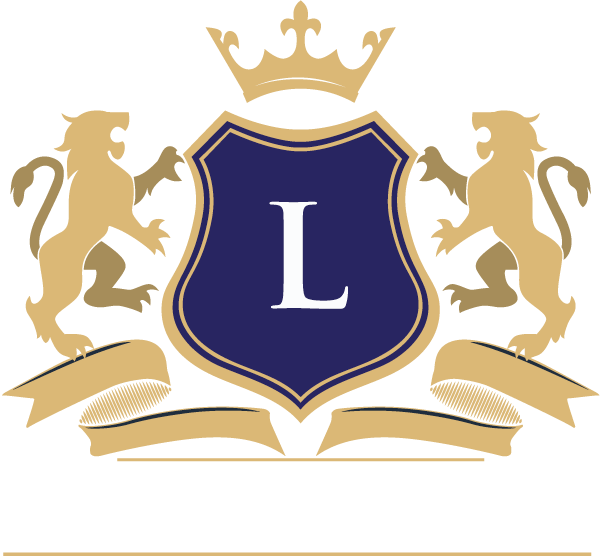In the evolving landscape of education, the integration of Artificial Intelligence (AI) has become a necessity for innovative instructional design, especially in higher education. Among the myriad of AI tools, ChatGPT, developed by OpenAI, emerges as a potent resource for educators, instructional designers, and learners alike. This article delves into the utilization of ChatGPT in higher education instructional design, elucidating key terminologies and illustrating the transformative potential of this modern tool.
Understanding the Terminologies
Instructional Design
As we discussed in another article, Instructional Design (ID) is a systematic process that focuses on the creation of educational experiences that are efficient, effective, and engaging. The process encompasses the analysis of learners’ needs, the formulation of learning objectives, the design of instructional materials, and the evaluation of educational outcomes.
ChatGPT
ChatGPT is a language model based on the GPT (Generative Pre-trained Transformer) architecture. It’s capable of understanding and generating human-like text, thus providing a valuable tool for various educational applications.

Embedding ChatGPT in Instructional Design
The integration of ChatGPT in instructional design in higher education unveils a plethora of opportunities to enhance the learning experience. Below are elaborated discussions on four key areas—Enhanced Interaction and Engagement, Resource Development, Continuous Assessment, and Collaborative Learning—where ChatGPT can significantly contribute. We will use Business Management Modules as an example to clarify each.
Enhanced Interaction and Engagement:
ChatGPT’s capability to simulate human-like interactions plays a pivotal role in creating interactive learning environments. It can be leveraged to:
- Provide Real-time Feedback: ChatGPT can provide real-time feedback to students, which is crucial for their learning and understanding. This feature is highlighted as a way to offer timely guidance, corrections, and support to students (Source)
- Example: In a Business Management course, students could be tasked with developing marketing strategies for a hypothetical product. They can input their strategies into a platform integrated with ChatGPT, which can provide immediate feedback based on predefined criteria or industry standards, pointing out strengths and suggesting areas for improvement.
- Facilitate Clarifications: While there isn’t a specific example related to facilitation of clarifications, the ability of ChatGPT to provide personalized feedback and support might serve this purpose as well (Source) (Source).
- Example: Business Management students often encounter complex concepts such as financial analysis or supply chain management. They can interact with ChatGPT to seek clarifications on these topics, obtaining instant, personalized explanations which can be illustrated with real-world examples or simplified analogies to aid in comprehension.
- Personalized Learning Experiences: ChatGPT can tailor learning experiences to individual students’ learning styles, abilities, and interests, offering a customized educational experience (Source).
- Example: In a Business Management course, based on a student’s previous interactions and performance on topics like organizational behavior or human resources management, ChatGPT can provide personalized case studies, reading recommendations, or simulation exercises to improve their understanding and skills in these areas.
Resource Development:
Instructional designers can harness ChatGPT for rapid resource development in several ways:
- Drafting Quizzes and Exercises: ChatGPT’s capability in generating study materials is mentioned, which can include drafting quizzes and exercises (Source).
- Example: In a Business Ethics course within a Business Management major, educators can utilize ChatGPT to draft quizzes and exercises. For instance, ChatGPT can be prompted to generate multiple-choice questions or short-answer quizzes on ethical decision-making based on real-world business dilemmas. The questions generated can assess students’ understanding of ethical theories and their application in business scenarios.
- Creating Explanatory Content:
- Example: In a Financial Management course, ChatGPT can assist in drafting initial versions of explanatory content or study guides on topics like capital budgeting or financial ratio analysis. Educators can input the main learning objectives and key points into ChatGPT, which then generates a draft of the content. This draft can later be refined by educators to ensure accuracy and alignment with course objectives.
- Development of Interactive Learning Modules: ChatGPT supports active and collaborative learning by creating interactive learning environments, possibly through the development of interactive learning modules (Source).
- Example: For a course on Operations Management, ChatGPT can be employed to create interactive learning modules on topics like inventory management or quality control. For instance, a module could be designed where students interact with a virtual business environment, making decisions on inventory levels based on simulated demand patterns. ChatGPT can provide real-time feedback on the decisions made, helping students understand the impact of their decisions on operational efficiency and profitability.
Continuous Assessment:
ChatGPT’s utility extends to the realm of continuous assessment, enabling:
- Immediate Feedback on Assessments:
- Example: In a Marketing Strategy course, students might be assessed through case study analyses where they apply theoretical concepts to real-world business scenarios. Post-assessment, ChatGPT can be employed to provide instant feedback on students’ performance by comparing their responses against a set of predefined criteria or model answers. It can highlight areas of strength, such as a well-analyzed SWOT analysis, and areas requiring improvement like insufficient market segmentation strategies.
- Customized Assessment Tools: The personalization capabilities of ChatGPT could extend to the design of customized assessment tools (Source).
- Example: In a Human Resources Management course, assessments could be tailored to individual learning trajectories. For instance, based on previous interactions and performances, ChatGPT can help design personalized assessments that gauge students’ understanding of recruitment strategies or labor laws accurately. It can generate scenario-based questions or case studies that challenge students at their own level of understanding, ensuring a more personalized and effective assessment experience.
- Formative Assessment Practices:
- Example: For a course in Organizational Behavior, formative assessment practices are pivotal to track and enhance students’ understanding over time. ChatGPT can facilitate ongoing formative assessments through interactive quizzes and discussions on topics like leadership styles, team dynamics, or organizational culture. For example, after a module on leadership theories, ChatGPT could generate a set of discussion prompts or quizzes that help both students and instructors gauge the understanding and application of these theories in organizational settings. Through the continuous feedback and interaction facilitated by ChatGPT, students can better grasp the course material while instructors gain insights into the learning progress, enabling a more informed instructional approach.
Collaborative Learning:
ChatGPT fosters a conducive environment for collaborative learning:
- Facilitation of Group Discussions: ChatGPT can create discussion prompts, supporting active and collaborative learning which may include moderating online discussions (Source).
- Example: In a Business Law course, understanding and discussing complex legal scenarios is crucial. ChatGPT can facilitate group discussions by generating discussion prompts on various legal cases or theoretical concepts. For instance, it could generate a series of questions on a landmark corporate law case to spark discussion among students. Additionally, ChatGPT can moderate online discussions to ensure they remain focused and productive by providing additional information or redirecting the discussion when it veers off-topic.
- Support in Collaborative Projects:
- Example: In a Strategic Management course, students often engage in group projects to develop strategic plans for hypothetical or real organizations. ChatGPT can act as a valuable resource for information, clarification, and ideation during these collaborative endeavors. For example, if a group encounters a challenge in formulating a competitive analysis, they could interact with ChatGPT to obtain clarifications or additional information on relevant analysis frameworks, thereby supporting the project’s progression.
- Enhancement of Critical Thinking: The interactive and collaborative learning environments created by ChatGPT can foster critical thinking among students (Source).
- Example: In a Business Ethics course, enhancing critical thinking is essential for analyzing ethical dilemmas in business scenarios. ChatGPT can facilitate structured debates and argumentation exercises on various ethical issues. For example, it could generate a debate prompt on corporate social responsibility, provide supporting arguments for both sides, and even help structure the debate format. Through such interactive and thought-provoking exercises facilitated by ChatGPT, students can hone their critical thinking and reasoning skills, which are indispensable in making informed and ethical business decisions.
Future Horizons
The fusion of AI with instructional design heralds a new era in higher education, where personalized, interactive, and collaborative learning experiences are at the forefront. As ChatGPT continues to evolve, its potential to revolutionize educational practices is boundless, paving the way for a more engaging and effective learning journey.
ChatGPT’s incorporation in higher education instructional design is not merely a trend, but a significant stride towards modern, efficient, and learner-centered education. By understanding and harnessing the capabilities of ChatGPT, educators and instructional designers are well-poised to create transformative learning environments that resonate with the digital age.







Leave a Reply
You must be logged in to post a comment.